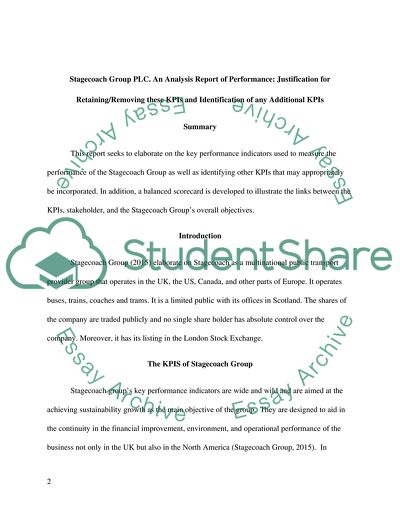Cite this document
(Stagecoach Group plc. An analysis report of performance: justification Coursework, n.d.)
Stagecoach Group plc. An analysis report of performance: justification Coursework. https://studentshare.org/finance-accounting/1866489-stagecoach-group-plc-an-analysis-report-of-performance-justification-for-retainingremoving-these-kpis-and-identification-of-any-additional-kpis
Stagecoach Group plc. An analysis report of performance: justification Coursework. https://studentshare.org/finance-accounting/1866489-stagecoach-group-plc-an-analysis-report-of-performance-justification-for-retainingremoving-these-kpis-and-identification-of-any-additional-kpis
(Stagecoach Group Plc. An Analysis Report of Performance: Justification Coursework)
Stagecoach Group Plc. An Analysis Report of Performance: Justification Coursework. https://studentshare.org/finance-accounting/1866489-stagecoach-group-plc-an-analysis-report-of-performance-justification-for-retainingremoving-these-kpis-and-identification-of-any-additional-kpis.
Stagecoach Group Plc. An Analysis Report of Performance: Justification Coursework. https://studentshare.org/finance-accounting/1866489-stagecoach-group-plc-an-analysis-report-of-performance-justification-for-retainingremoving-these-kpis-and-identification-of-any-additional-kpis.
“Stagecoach Group Plc. An Analysis Report of Performance: Justification Coursework”. https://studentshare.org/finance-accounting/1866489-stagecoach-group-plc-an-analysis-report-of-performance-justification-for-retainingremoving-these-kpis-and-identification-of-any-additional-kpis.


